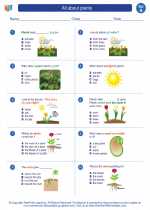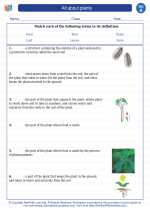Nutrient Cycling Study Guide
1. What is Nutrient Cycling?
Nutrient cycling is the movement and exchange of nutrients between the biotic and abiotic components of an ecosystem. This process involves the uptake, use, release, and reuse of nutrients by living organisms and the environment.
2. Why is Nutrient Cycling Important?
Nutrient cycling is essential for maintaining the balance of nutrients within an ecosystem. It ensures that essential elements, such as carbon, nitrogen, and phosphorus, are available for the growth and development of living organisms. Nutrient cycling also plays a crucial role in the sustainability of ecosystems and the global environment.
3. What are the Key Nutrients Involved in Nutrient Cycling?
The key nutrients involved in nutrient cycling include carbon, nitrogen, phosphorus, and water. These nutrients are essential for the growth and survival of living organisms and are continuously cycled through the ecosystem.
4. What are the Stages of Nutrient Cycling?
Nutrient cycling involves several stages, including nutrient uptake by plants, consumption of plants by herbivores, decomposition of organic matter, and the release of nutrients back into the soil and water. The nutrients are then taken up again by plants, completing the cycle.
5. What are the Factors Affecting Nutrient Cycling?
Various factors can affect nutrient cycling, including human activities such as deforestation, agriculture, and industrialization. Climate change, pollution, and habitat destruction can also impact nutrient cycling processes within ecosystems.
6. How Can Humans Contribute to Nutrient Cycling?
Humans can contribute to nutrient cycling by practicing sustainable land use, reducing waste production, and promoting the use of organic fertilizers. Recycling materials, composting organic waste, and minimizing the use of chemical fertilizers and pesticides can also support healthy nutrient cycling in ecosystems.
.◂Science Worksheets and Study Guides First Grade. All about plants

 Worksheet/Answer key
Worksheet/Answer key
 Worksheet/Answer key
Worksheet/Answer key
 Worksheet/Answer key
Worksheet/Answer key
 Vocabulary/Answer key
Vocabulary/Answer key
